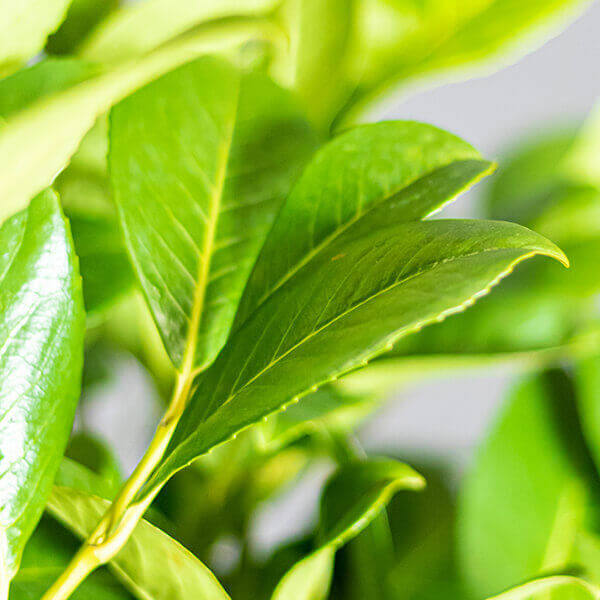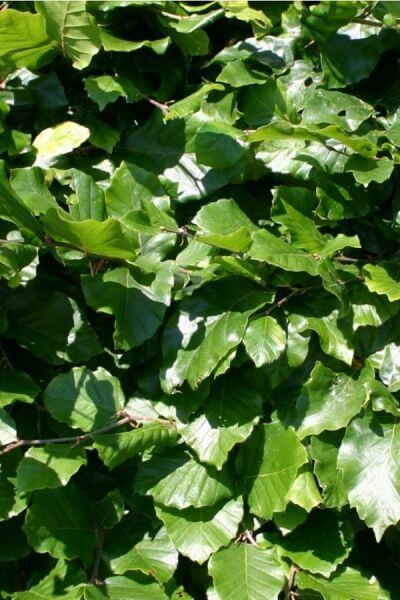Hedge Plants For Artistic Borders
Hedge Plants For Artistic Borders
Blog Article
Hedge Plants For Community Gardens
Boost your garden's appeal with lavish hedge varieties such as Yew (Taxus), Thuja, Laurel, Photinia, and Bamboo, commemorated for their structural integrity and ecological benefits.
Yew and Thuja offer evergreen protection and winter durability, while Laurel offers rapid development and broad, aromatic leaves.
Photinia adds seasonal beauty with its lively red foliage, and Bamboo lends a low-maintenance, serene atmosphere.
These hedges improve air quality, lower noise, and produce tranquil, personal spaces.
Appropriate planting, spacing, and upkeep make sure vigorous growth and eco-friendly consistency.
Explore how these lush varieties can raise your garden's beauty and wellness.
Key Takeaways
Change Your Garden With Lush Hedge Ranges
- Select Yew for its dense, evergreen development and unequaled longevity.
- Select Laurel for its quick development and broad leaves, ensuring quick privacy.
- Pick Photinia for its lively seasonal foliage, which turns a striking dark red.
- Utilize Bamboo for a low-maintenance, winter-hardy hedge with aesthetic appeal.
- Space plants 2-3 per meter and prune routinely for optimum growth and health.
Popular Hedge Plants
When transforming a garden with lush hedge varieties, it's vital to think about popular hedge plants such as Yew, Thuja, Laurel, and Photinia due to their unique qualities and benefits.
Yew (Taxus) is highly esteemed for its longevity and dense, green growth, making it a prime choice for enduring landscapes.
Thuja is noted for its evergreen foliage and robust winter season strength.
Photinia includes seasonal vibrancy with red leaves that darken over time, creating vibrant visual appeal.
Laurel uses quick development and fragrant, broad leaves, suitable for quick privacy.
Additionally, Bamboo is an outstanding option for ambiance, offering a low-maintenance, winter-hardy option that boosts the garden's visual with its sophisticated, swaying walking canes.
These choices deal with a variety of horticultural needs and choices.
Benefits of Garden Hedges
Garden hedges use a multitude of advantages, making them an important addition to any landscape. These natural barriers are economical to implement and provide substantial wind security, enhancing air blood circulation and contributing to noise reduction. The dense foliage of hedges like Thuja and Beech guarantees privacy by obstructing visibility, developing a peaceful and secluded environment.
Hedges likewise play an important role in microclimate guideline, offering a stable environment that promotes plant growth and lessens temperature variations. Their elaborate leaf structures filter toxins, improving air quality and adding to a healthier garden environment.
Furthermore, hedges master noise decrease, absorbing and deflecting acoustic waves to lower ambient noise levels. This dual performance of providing both acoustic and visual privacy enhances the general harmony and aesthetic appeal of any garden.
Planting and Upkeep Tips
For an effective hedge, meticulous preparation of the planting area is vital. Guarantee the soil has appropriate pH and drainage to support strong root advancement.
Space the plants properly for the chosen types. Water the hedge frequently during its initial growth stage, adjusting as required with seasonal modifications.
Execute a methodical bug control and disease prevention method, using organic or chemical treatments when essential. Routinely check for aphids, mites, and fungal infections.
Apply mulch to keep wetness and reduce weeds. Seasonal pruning promotes thick development and air flow, necessary for plant health.
Following these standards will help you cultivate a dynamic, properly maintained hedge that boosts the beauty of your garden.
Spacing and Trimming Guidelines
Spacing and Trimming Guidelines
Proper spacing and trimming are essential for cultivating healthy, aesthetically appealing hedges. Appropriate spacing makes sure each plant gets enough nutrients, light, and air flow.
Follow these standards for optimum hedge upkeep:
- Spacing: Position hedge plants 2-3 plants per meter to motivate robust growth.
- Pruning Methods: Regular pruning is vital for preserving preferred hedge height and shape. Trim new growth in summer and cut down older wood throughout winter season.
- Seasonal Care: Change trimming schedules and methods according to seasonal requirements to make sure plant health.
- Hedge Height: Frequently screen and trim to maintain the desired hedge height and attain consistent aesthetic appeals.
Sticking to these actions will guarantee your hedge flourishes, enhancing both the appeal and performance of your garden.
Picking the Right Hedge
Selecting the Right Hedge
Selecting the proper hedge involves evaluating aspects such as fully grown height, foliage density, and environmental resilience. Effective hedge plant selection needs comprehending each species' development qualities and site-specific adaptability.
For instance, Yew (Taxus) offers exceptional durability and dense development, while Thuja is notable for its winter season durability. In addition, considering upkeep requirements is important; fast-growing types like Laurel or Privet demand routine trimming, whereas low-maintenance alternatives like Bamboo or Ivy may be more suitable for those seeking very little maintenance.
Environmental aspects such as soil type, light schedule, and moisture conditions need to also assist the selection procedure. This mindful method makes sure the chosen hedges will prosper, providing both functional and visual advantages to the garden landscape.
Delivery and Planting Suggestions
To ensure your hedge plants flourish, they need to be delivered by specialized couriers and planted without delay upon arrival.
Follow these essential steps for effective planting:
- Soil Preparation: Enrich the soil with raw material to enhance drain and nutrient content.
- Planting Depth: Create a trench twice the width and equivalent to the depth of the root ball.
- Watering Strategies: Water thoroughly after planting, keeping the soil consistently damp but not filled.
- Mulching: Apply a layer of mulch to retain moisture and suppress weeds.
Consumer Assistance and Service
Offered the vital role of prompt support in horticultural pursuits, our consumer support group is offered 6 days a week through telephone, email, and social media to provide skilled advice and quickly attend to any issues. Their devotion to quick reaction times makes sure consumer fulfillment by solving questions related to plant health, optimal planting approaches, and upkeep schedules.

Action Time
-------------------
This thorough support group, reinforced by an outstanding 9.3/ 10 client rating, highlights our commitment to enhancing the gardening experience for every client.
Often Asked Questions
For How Long Does It Consider Hedge Plants to Develop?
Hedge plants normally need one to 3 years to end up being completely established, with the specific period differing by types and growing conditions.
Effective care during this critical period is essential for robust growth. Constant watering, alert weed control, and proper fertilizer application are essential in promoting strong root advancement.
For example, fast-growing species like Laurel may establish quicker, while slower-growing varieties such as Yew might take longer. Thorough upkeep speeds up the establishment process, resulting in healthy and thick hedges.
What Are the Finest Hedge Plants for Privacy?
The concern of the finest hedge plants for personal privacy involves evaluating evergreen and deciduous choices.
Evergreen hedges like Thuja, Laurel, and Cypress provide year-round coverage, making sure constant privacy.
In contrast, deciduous hedges such as Beech use seasonal privacy, shedding leaves in colder months.
Secret maintenance tips for personal privacy hedges include regular cutting, fertilizing in spring, and get more info appropriate spacing-- typically 2 to 3 plants per meter.
In addition, consistent watering and diligent weed elimination are important for promoting healthy, dense development.
Can Hedge Plants Draw In Wildlife to My Garden?
Yes, hedge plants can attract wildlife to your garden by supplying important advantages like shelter, food, and nesting sites, therefore improving local biodiversity. For instance, yew, holly, and laurel are outstanding for attracting birds, while ivy supports a range of insects.
Nevertheless, it is necessary to keep in mind that there are some drawbacks, such as increased maintenance to handle insects and routine upkeep. Carefully picking and maintaining hedge ranges can help balance these disadvantages and advantages, ultimately promoting a lively and sustainable environment in your garden.
Are There Any Flowering Hedge Plants Available?
Yes, there are flowering hedge plants offered that can boost the beauty of your garden.
For example, Elaeagnus, likewise called Olive Willow, produces fragrant white flowers in the fall, adding a touch of beauty.
Photinia, another popular option, showcases lively red leaves that mature into a rich green, producing a vibrant visual result throughout the seasons.
To ensure these plants thrive, it's important to practice correct pruning strategies and seasonal maintenance, such as trimming new development in the summer and cutting back in the winter.
These measures will help preserve the health and visual appeal of your blooming hedges.
How Do I Avoid Bugs in My Hedge Plants?
To avoid bugs in hedge plants, use natural bug control approaches and keep correct hedge care. Present beneficial insects like ladybugs, which prey on harmful insects, to create a balanced ecosystem.
Regularly examine your hedges for indications of problem and without delay get rid of any afflicted parts to avoid the spread. Guarantee the health of your hedges by applying balanced fertilizers and providing appropriate water.
Make use of mulching to maintain soil wetness and correct spacing to minimize plant stress and promote robust growth. These practices jointly assist in lessening insect concerns and keeping a healthy hedge.
Conclusion
In essence, picking the best hedge varieties such as Yew, Thuja, and Laurel can change any garden into a tranquil sanctuary. These plants offer year-round plant, enhance visual appeal, and deal practical benefits like sound decrease and wind protection.
Appropriate planting strategies, accurate spacing, constant watering, and seasonal cutting are vital for ideal development.
Dependable shipment services and skilled consumer support ensure a seamless experience from purchase to planting, making it simpler than ever to raise your outside area.
Garden hedges use a multitude of benefits, making them a valuable addition to any landscape. These natural barriers are economical to carry out and provide substantial wind security, boosting air flow and contributing to sound reduction. The thick foliage of hedges like Thuja and Beech ensures personal privacy by obstructing exposure, developing a secluded and peaceful environment.

Pruning Methods: Regular pruning is necessary for keeping preferred hedge height and shape. Trim brand-new growth in summer and cut back older wood throughout winter.
Report this page